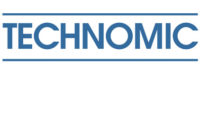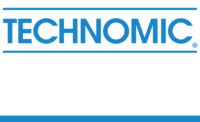Streamlining Restaurant Supply Chains
IFMA and The Partnering Group classify and communicate the value of chain operator-supplier relationships

SOURCE: IStock photo © Rawpixel Ltd

SOURCE: INTERNATIONAL FOODSERVICE MANUFACTURERS ASSOCIATION

SOURCE: INTERNATIONAL FOODSERVICE MANUFACTURERS ASSOCIATION

Food and beverage manufacturers fall into one of four supplier category roles. Roles include being a supplier of “core” products, which are a broad set of foods accounting for most sales; to a “differentiator” category with more signature items that drive traffic.
SOURCE: FIREHOUSE SUBS




Manufacturers and operators alike have experienced challenges when working together trying to develop trusted partnerships. Operators often wonder how to best articulate their needs to manufacturers; manufacturers wonder how to best prove their worth to operators.
How great would it be if manufacturers and operators were speaking the same language and were able to articulate their role in each other’s business?
In 2014, the International Foodservice Manufacturers Association (IFMA) and The Partnering Group created a committee consisting of individuals from 30 chains and manufacturers to create a framework to help classify, understand, and communicate the value of chain operator/supplier relationships. This framework developed a best practice in collaboration referred to as the Operator/Manufacturer Collaboration Model (OCM).
The objective was to take emotion out of the conversation for both parties and be able to have more candid conversations with business partners by clarifying operator and manufacturer expectations and reducing resource investment in non-value added work. Every manufacturer and operator has a limited amount of resources; the goal of this model is to help segment and allocate some of those resources to the appropriate partner based on the level of necessary collaboration. And perhaps most importantly, it aims to develop a common language and framework to drive efficiency and effectiveness.
It’s easy for both parties to get used to internal lingo; each may have different consumer segmentation styles or definition for their business channels, and if each were held to their own confines, this might not be an issue. The reality, however, is that no one stays within their own confines. Manufacturers and operators meet regularly and when they aren’t speaking the same language there’s a disconnect.
The committee of chain and manufacturer representatives met once a month (via conference call) to help address this disconnect. The majority of the committee’s time and energy – and most of what we consider OCM today – stems from Phase-1, called, “Identify & Engage.”
OCM Phase I is a segmentationframework to help classify, understand, and communicate the value of chain operator/supplier relationships. It is designed to help managers make choices on where to invest. Only through a collaborative understanding on the value that a supplier can bring and the opportunity that a chain account represents, can true alignment be created. The committee began with alignment between the two parties in determining the product category’s role. After alignment is met, the next step is defining the relationship and evaluating and classifying partners. It’s important to note that this model can and should be viewed as a two-way street; from the manufacturer or supplier end, this model helps them segment their chain accounts, and for operators to classify and segment suppliers.
The first step of the OCM is to understand product category roles. It uses a similar concept as IFMA’s Category Management Full Plate process, which focuses on collaboration between suppliers and distributors to reach the independent operator. The premise is that there needs to be mutual, upfront understanding regarding what role suppliers will play in the operator’s strategy. Alignment from the onset is critical. There are four category roles, each varying in the level of involvement.
These category roles range from being an “operational enabler,” which means a product that’s functional and necessary to everyday management, to a “differentiator” category that drives traffic. Category roles may vary by relationship. For example, in one relationship, a specific product might be an operational enabler while the same product may be viewed as a differentiator with a different trading partner.
OCM Relationship Pyramid
After developing a process for aligning on the category and role, the OCM committee created the relationship pyramid, which serves as the structural cornerstone of the collaboration model. It can be viewed from both the supplier and operator perspectives.
This pyramid also provides manufacturers with a strategic segmentation model that allows them to consider where they need to improve or in other instances, reallocate resources away from one customer to a more strategic partner. On the flip side, many operators find it beneficial to be able to segment suppliers to align with their own strategy and to understand the degree of collaboration and how they need their resources allocated.
As the image illustrates, there are four types of relationships outlined in this pyramid. One step is not necessarily better than another, since realistically, every partnership cannot, nor should be running at the highest level. Each level progressively calls for greater interaction, resources, and commitment on both sides.
The first level is a basic or transactional relationship. The basis of this relationship focuses on product and price; the product is not differentiated and the price has to be competitive, making this relationship more transactional in nature. There are limited contact points, typically a sales agent and a buyer, and the relationship can be relatively short term.
The second type of relationship is preferred. The relationship is built on a good (or often customized to a greater degree) product, some elements of value add such as insight, culinary or marketing and a higher level of service. These relationships are longer term and have a deeper understanding of each partner’s brands and needs.
The third type of relationship is collaborative. Here multiple contact points are engaged, R&D and culinary are involved to customize products, commodity risk management strategies may be developed, investment is made in sharing of insights and data, and thus increasing the need for organizational resources and multi-tiered contacts. At this point, collaboration is more of a two-way street as opposed to directed strictly by the operator.
The fourth relationship type is strategic. These are long term relationships with multiple people assigned. Risk and reward are explicitly defined for both the operator and supplier. Shared risk is spelled out as both move their businesses forward collaboratively. This is a relationship that has moved well beyond product, price and service. This relationship is characterized by total alignment and transparency all along the way.
Often chain accounts will look to these chosen few “strategic suppliers” to be their “category captains” and work with them on strategic planning for their category and product development, supply chain management, marketing messaging and menu innovation. Typically only 5% of suppliers have this type of relationship, as it requires the highest level of investment and collaboration. The benefits of being a strategic supplier can be significant. Suppliers get an inside track on the chain’s strategic initiatives leading to greater growth opportunities and a high level of business insulation.
Operators and manufacturers find that relationships tend to vary based on product category role. An operational enabler tends to be more of a transactional relationship and in some instances a seasonal product or LTO, while differentiators are more of a strategic partnership.
To drill down deeper into the expectations and involvement of both the supplier and operator, the committee created a support matrix, which along with the pyramid, has come to define what this model represents. The support matrix consists of eleven subcategories within five areas of business – product, price, place, promotion, and planning.
As the relationship moves from transactional towards strategic, or left to right in the matrix, the degree of collaboration and commitment of resources increases. The comittee identified what this entails in each of these subcategories, ranging from pricing and risk management to culinary/R&D and insights.
For example, in a transactional relationship, there is traditionally no culinary support. This may involve the purchasing/selling of a stock or off-the-shelf item. As the relationship moves into preferred, the supplier may offer some culinary or technical advice. Two-way interaction is first seen in a collaborative relationship, where there is likely a high level of customized support and first-in access to new technology. Strategic relationships consist of committed culinary/R&D development resources and menu development ideation sessions between both parties.
Using the support matrix, the committee created two scorecards – one from the manufacturer perspective and another from the operator’s. The scorecards use weighted scales and additional key metrics. For example, an operator may want to consider metrics such as the volume purchased from a manufacturer, or the percentage of a particular category that a manufacturer supplies. After rating their suppliers in these areas using the support matrix and additional metrics, it populates a “score” which helps determine where the supplier fits in the relationship pyramid.
Training on OCM Phase I is now available through IFMA. These sessions teach foodservice sales, procurement, culinary, insight and supply chain managers how to best implement and utilize this model to help improve efficiencies within operator and supplier conversations. These one-day sessions are facilitated by The Partnering Group (TPG) and include interactive workshops and case studies, and provide practical uses on how to incorporate the OCM back at the office and with business partners.
Visit www.ifmaworld.com for more information on the Operator/Manufacturer Collaboration Model or to find out how to become more involved.
Joint Business Planning – OCM Phase II
With the important foundation of the OCM now in place, the initiative has moved onto Phase II of its evolution: Joint Business Planning (JBP). IFMA and The Partnering Group are leading an industry-wide effort to develop a best practice in joint business planning between chain operators and manufacturers. To address the need for a standardized process and common language for joint business planning, The Partnering Group is leading a group of chain operators and foodservice manufacturers through three one-day planning sessions to create the process, language, tools and metrics required to facilitate collaboration between supply chain partners.
This industry board first met in late June to create a foodservice industry definition of joint business planning and to craft a roadmap of the necessary inputs and outputs of what a best practice joint business plan should entail. This group of industry pioneers are on the front-end of developing this industry best practice as they build their organizational capabilities in collaborative planning while building frameworks and tools that can be applied across the industry. The board will convene for two additional meetings in Chicago: Aug. 20 and Sept. 24.
Founding operators in this industry-wide initiative include: Sodexo, Quaker Steak & Lube, FOCUS Brands, Captain D’s, PF Chang’s China Bistro, Firehouse Subs and Quality Supply Chain Co-Op, Inc., the supply chain division of Wendy’s.
Also involved in this strategic initiative’s founding board are Ventura Foods, Rich Products, Kellogg’s, Ecolab, Dawn Food Products, Sargento, Key Impact, Unilever, PepsiCo, Wayne Farms and George Weston Foods.
Interested manufacturers and foodservice operators can contact Mike Schwartz, senior director, Centers of Excellence at IFMA. Contact him by email at mike@ifmaworld.com; or by phone at 312-540-4403.
Looking for a reprint of this article?
From high-res PDFs to custom plaques, order your copy today!










